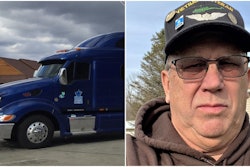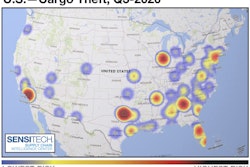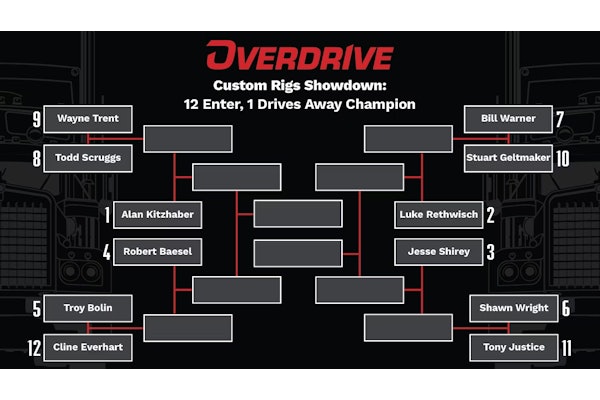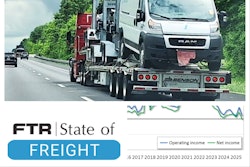
Trucking news and briefs for Tuesday, Nov. 24, 2020:
Carriers’ cost per mile fell 9% from 2018 to 2019
Following a record year in 2018 for freight demand and the highest tonnage in 20 years, trucking in 2019 saw a contraction that resulted in a dramatic per-mile cost decrease for fleets across the country, according to the latest Operational Costs report from the American Transportation Research Institute.
Carriers responding to ATRI’s report saw in 2019 a reduction in a number of costs, including fuel, repair and maintenance, as well as driver wages and benefits. According to ATRI, the per-mile costs of trucking contracted from $1.821 in 2018 to $1.652 in 2019 – a 9% decrease.
Of carriers who responded to the survey, 28% were from fleets with more than 1,000 power units; 19% were from fleets with 251-1,000 power units; 13% were fleets with 101-250 power units; 31% were from carriers with 26-100 power units; 9% had 5-25 power unites; and 1% had less than 5 power units.
The largest single line-item cost continued to be driver wages, representing 32% of the operating cost per mile. However, the combined percentage of driver wages and benefits fell slightly, from 43% in 2018 to 42% in 2019.

Carriers in 2019 spent 53.3 cents per mile on driver wages and 16 cents per mile on driver benefits, the report shows, down from 59.6 cents per mile for wages and 18 cents per mile for benefits in 2018.
Carriers did, however, pay out more in driver bonuses in 2019, with safety, starting and retention bonuses all increasing year-over-year.
The largest percentage decreases in operational costs in 2019 were seen with repair and maintenance costs and truck insurance premiums (16% and 19% decreases, respectively). Repair and maintenance costs fell from 17.1 cents per mile to 14.3 cents per mile, while insurance premiums fell from 8.4 cents per mile to 6.8 cents per mile.
“While the 2019 insurance costs show a per-mile decrease, insurance companies report that trucking fleets are assuming higher risk levels through higher deductibles, self-insurance, expanding use of insurance captives, and lower levels of excess liability coverage,” ATRI says.
“Given the substantial insurance cost increases over the last several years, it appears that the industry has reached a ceiling in its ability to continuously cover annual double-digit increases in insurance premiums.”
Additionally, fuel costs fell 9% in 2019, from 43.3 cents per mile to 39.6 cents per mile, reflecting the national decrease in diesel prices of 12 cents from 2018 to 2019.
When broken down by industry sector, each of truckload, LTL and specialized/other saw cost per mile decreases in 2019. The largest decrease was seen by truckload carriers, where the cost per mile of $1.55 was a decrease of 9%. Specialized/other carrier cost per mile was $1.85, an 8% decrease. The LTL segment’s cost per mile of $1.85 represented a 3.5% drop from 2018.
Updated ag, livestock definitions for HOS take effect Dec. 9
The DOT’s updated definitions for agricultural commodity and livestock as they pertain to the hours of service regulations will take effect Dec. 9.
As reported last week, the Federal Motor Carrier Safety Administration is clarifying the definitions of the terms “any agricultural commodity,” “livestock,” and “non-processed food,” as they are used in the definition of “agricultural commodity” for HOS regs.
A Federal Register notice published Tuesday officially sets the date that the new definitions in the interim final rule take effect, and also opens a comment period for a month, through Dec. 24. Specifically, FMCSA is asking for public comment on the revised definitions above, including answers to the following questions:
- Will the clarifications of the terms “any agricultural commodity,” “non-processed food,” and “livestock” result in more consistent application of the HOS exemptions? Why or why not?
- Will the clarifications impact the number of drivers who would use the exemptions? If so, how and to what extent? For example, how, if at all, will including all living animals cultivated, grown, or raised for commercial purposes, including aquatic animals, within the definition of “livestock” impact the number of drivers?
- Will any of the clarifications result in higher or lower costs for the transportation of agricultural commodities and livestock?
- Will any of the clarifications result in other benefits to stakeholders, including consumers and State enforcement personnel?
IRS affirms expenses paid with PPP loans not deductible if forgiveness expected
Paycheck Protection Program loans are essentially treated as a nontaxable grants, according to Internal Revenue Source notices issued throughout the year. Expenses paid with those funds, thus, are not deductible as business expenses. Last week, the IRS issued a new notice that took that a little farther for businesses whose PPP loans are not forgiven before the dawn of the new year. If forgiveness is expected, whether it’s been granted or not, expenses paid for by the loan should not be deducted on 2020 tax returns.
The notice is contained within IRS Revenue Ruling 2020-27.
Plenty businesses had “hoped that by delaying the loan forgiveness application — and, as a result, PPP loan forgiveness — until 2021, calendar-year taxpayers could shift the non-deductible expenses event forward a year,” noted the Katz Sapper & Miller tax firm. “We now have the IRS’ position on this issue: If there is a reasonable expectation of forgiveness, borrowers are out of luck” on that score.
Owner-operator business services firm offered ATBS offers a series of real-word scenarios around this year’s tax liability for owner-operators as it relates to the PPP loan in the ebook discussed at this link.
Truck stops offering free Thanksgiving meals to truckers
For truck drivers that won’t make it home this week for Thanksgiving, several truck stops are offering Thanksgiving meals to drivers.
As it has for the past 13 years, the Boise Stage Stop in Idaho will serve free Thanksgiving meals to any trucker on Thursday, Nov. 26. All you have to do is show your current CDL. In addition to a traditional Thanksgiving dinner, there will be numerous merchandise giveaways to add to the festivities. The Boise Stage Stop is located just off I-84 about 25 miles southeast of Boise.
The Cowboy Cafe in Lyman, Wyoming, will provide free Thanksgiving meals to truckers Wednesday, Nov. 25. The menu includes turkey, stuffing potatoes, cranberries, corn, dinner roll and pie. They’ll be serving until the food is gone. The cafe is located at the Lyman exit of I-80 in southwest Wyoming.
Pollard Flat U.S.A. in Lakehead, California, also offers a free Thanksgiving meal from noon to 4 p.m. Thursday. Because of COVID-19 restrictions, the traditional holiday meal has to be to go. Pollard Flat is located off I-5 on Eagles Roost Road in Lakehead.













